The Ultimate Guide to Growing Perfect Tomatoes at Home
Homegrown tomatoes are one of those simple joys that just hit different. Whether you toss them in salads, layer them on sandwiches, or enjoy them straight off the vine, there’s something special about picking them right from your yard. It’s no wonder so many folks across the country give tomato growing a shot every year.
Besides the better flavor, growing your own tomatoes can also help you cut down on grocery costs. Store-bought tomatoes can add up fast, especially if you go for the better-tasting ones. A few plants at home can give you more than enough to enjoy through the season and even share with friends or family.
This post may contain affiliate links, which helps keep this content free. Please read our disclosure for more info.
Selecting the Right Tomato Variety
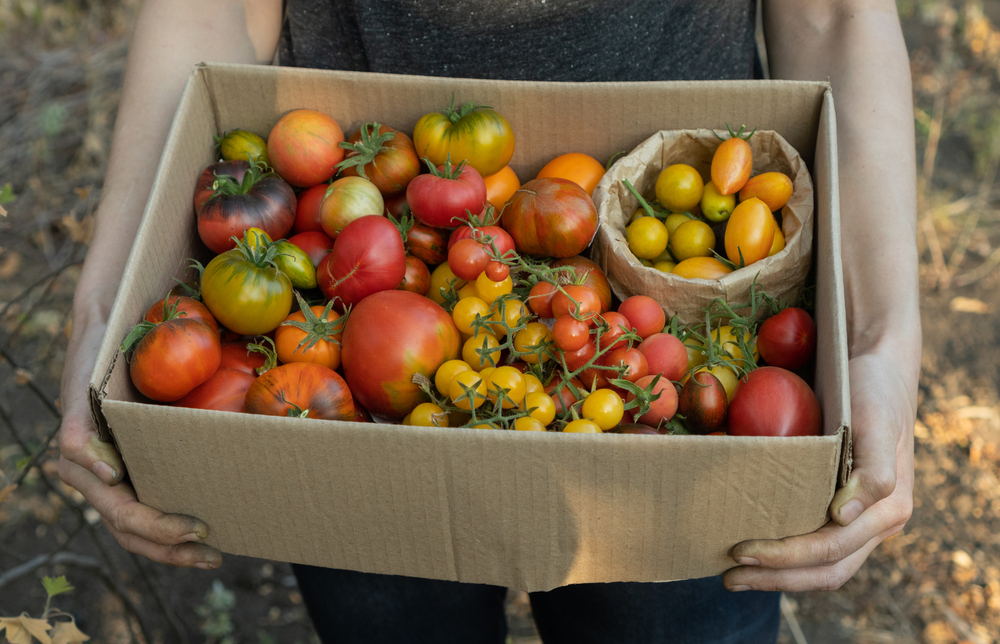
There are several types of tomatoes to choose from, and each one suits a different purpose. Some are sweet and bite-sized, while others are large and meaty. Before planting, think about how you want to use them.
- Cherry tomatoes are great for snacking and salads
- Roma tomatoes work well for sauces and cooking
- Beefsteak tomatoes are perfect for slicing and sandwiches
You’ll also want to consider your space. If you’re growing in pots or have a small garden, look for compact varieties. Larger yards can handle sprawling vines. Climate also plays a part, so it helps to go with types that grow well in your region.
Preparing Your Garden Soil
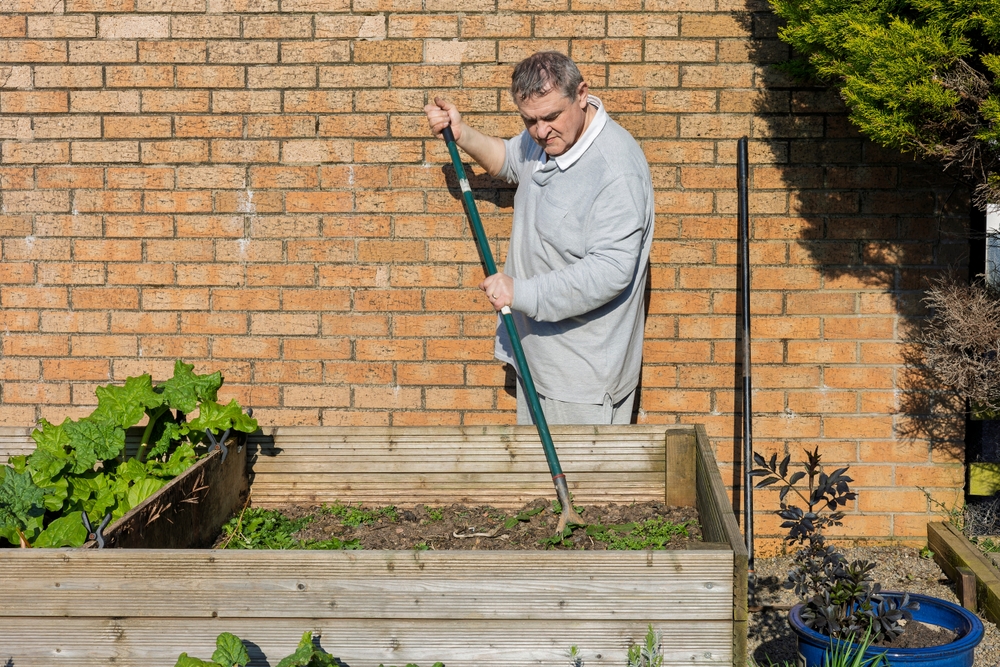
Tomatoes like well-draining soil that’s loose and full of nutrients. If your soil feels hard or clumpy, mix in plenty of compost before planting. You’re aiming for a soil that holds moisture but doesn’t stay soggy.
Adding aged compost or well-rotted manure helps give the plants a good start. This adds nutrients and helps the roots spread out more easily. It’s also a good idea to remove any rocks or debris that might get in the way.
Planting Tomatoes: Timing and Technique
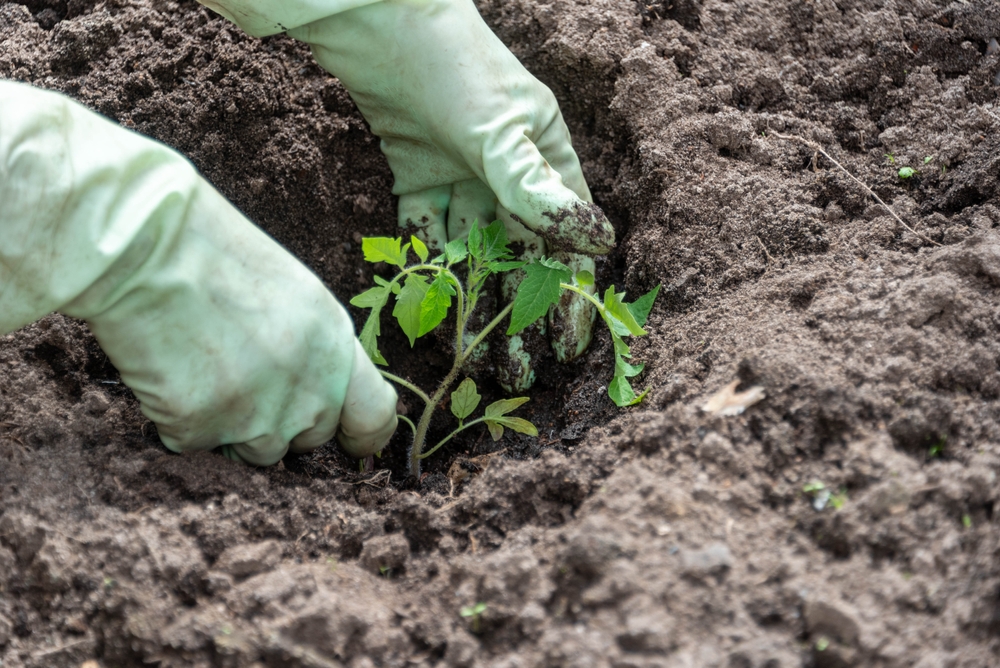
Tomatoes love warmth, so you’ll want to wait until the danger of winter has passed. Most people plant them once nighttime temps stay above 50°F. If you’re starting from seed, give them about 6 to 8 weeks indoors before the last frost date in your area.
When planting, bury the stem deeper up to the first set of leaves. Roots will grow along the buried stem, giving the plant more strength. Give each plant enough space to spread, usually about 18 to 24 inches apart, depending on the variety.
Tomato Care: Watering and Feeding
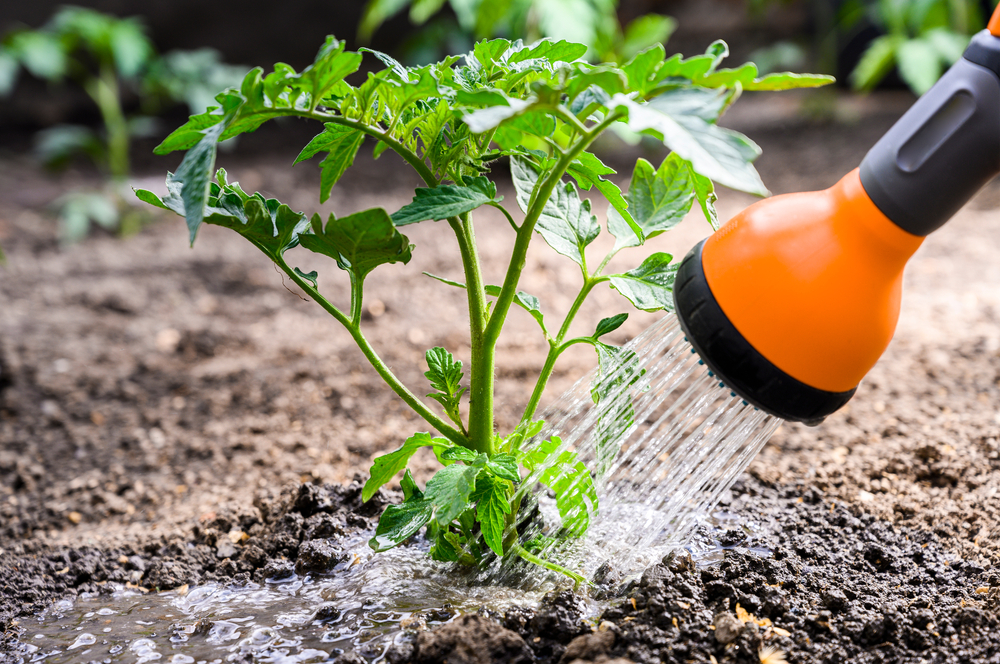
Tomatoes like consistent moisture. If they dry out and then get soaked, the fruit may crack or develop problems. It’s better to water deeply a couple of times a week than to sprinkle them every day. Try to water in the morning so the leaves dry off quickly.
- Water at the base to avoid wet leaves
- Use mulch like straw or shredded leaves
- Feed regularly during the growing season
Fertilizing every couple of weeks helps keep the plants producing. A balanced fertilizer works well, and adding mulch around the base of each plant helps lock in moisture and cut down on weeds.
Protecting Your Tomato Plants from Pests and Diseases
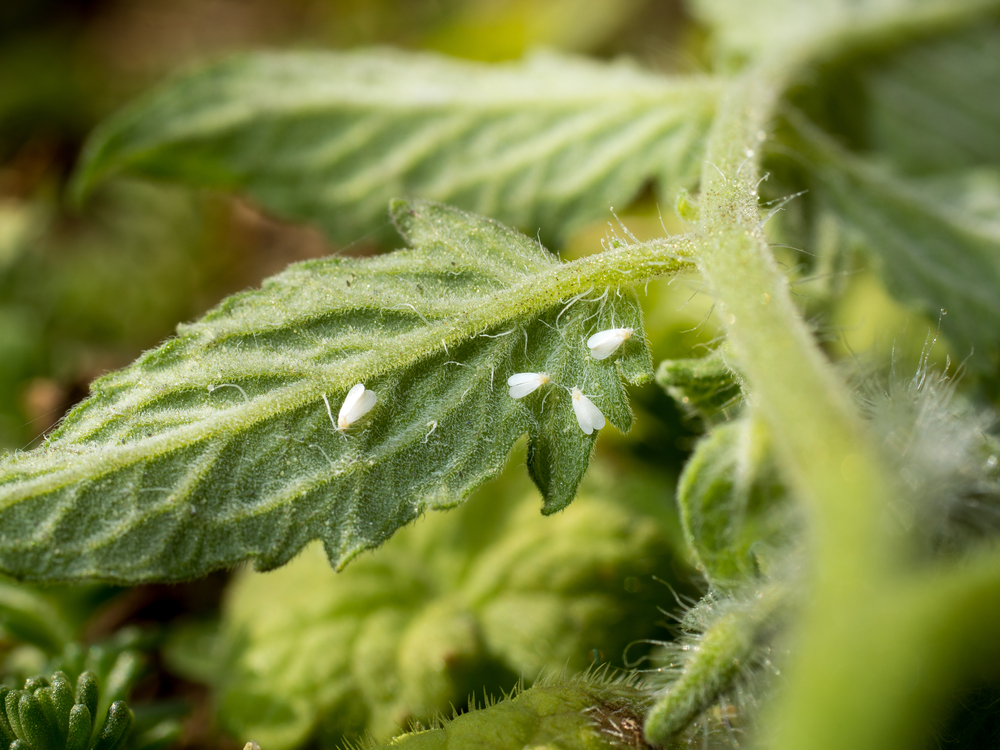
Tomatoes can attract bugs and develop a few issues if you’re not paying attention. Here are the usual pests that may trouble your tomato plants
- Aphids that cluster under leaves
- Tomato hornworms that chew through stems and fruit
- Whiteflies that weaken plants and spread disease
Check the plants often. Picking off hornworms by hand or spraying aphids with water can help a lot. Natural sprays like neem oil or insecticidal soap can be used if things get worse. Also watch for leaf spots, wilting, or yellowing, which may be signs of disease.
Pruning and Supporting Tomato Plants
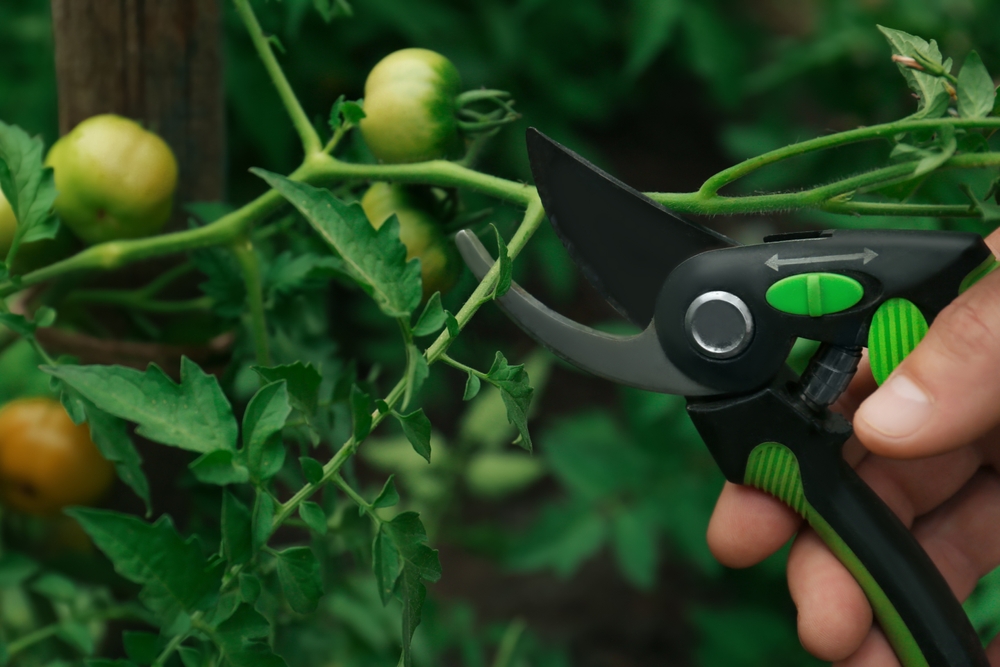
Some tomato plants really sprawl out, especially the vining ones. Pruning off the little shoots that grow between the main stem and branches can help the plant focus on growing fruit instead of extra leaves. Don’t go overboard, and just a little trimming goes a long way.
Tomatoes also need support. You can use cages, stakes, or even string them up if you’re short on space. Supporting them keeps the fruit off the ground and helps you spot problems early.
Harvesting Tomatoes at the Right Time
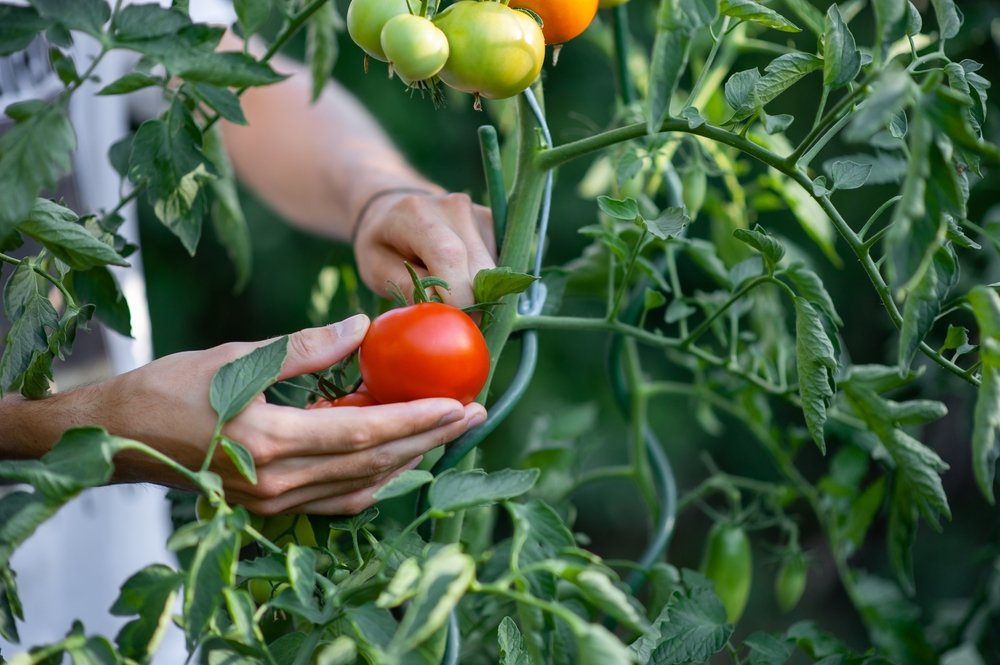
Tomatoes are ready when they’re fully colored and slightly soft to the touch. Some people like them right off the vine, while others wait until they’re fully red. Either way, give them a gentle twist or use garden scissors so you don’t break the stem.
Don’t wait too long, since overripe tomatoes can split or attract pests. Pick them often so your plant keeps producing.
Common Tomato Growing Issues
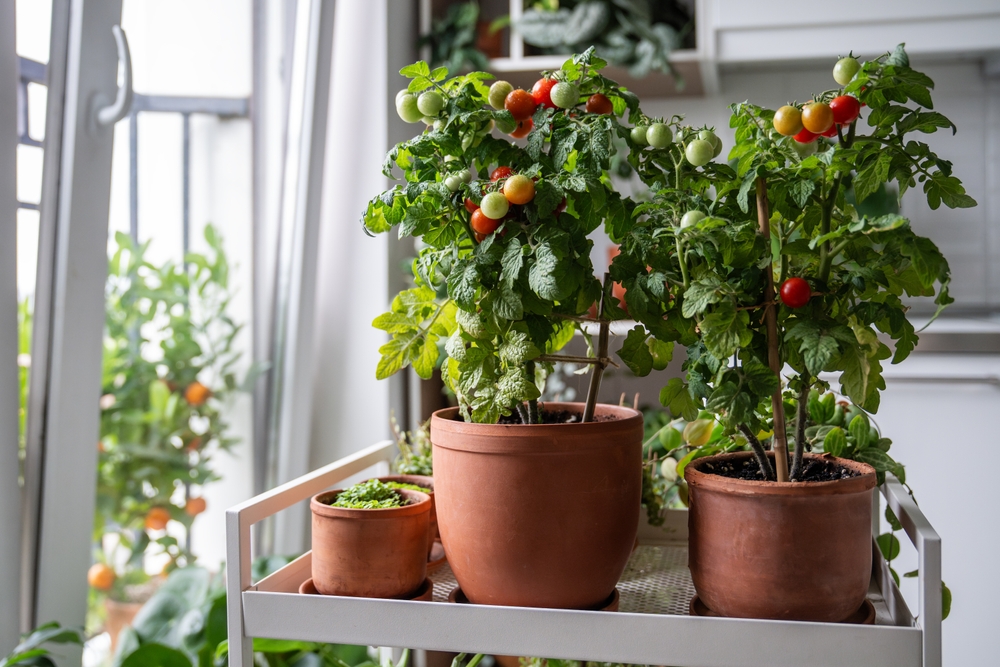
Even when you’re doing everything right, tomatoes can throw a curveball now and then. Here are a few common problems that you might encounter while growing your tomatoes.
- Blossom end rot (black, sunken spots on the bottom)
- Cracked fruit after heavy rain or overwatering
- Yellow leaves from nutrient problems or too much water
Most of these can be fixed with a few simple changes. Try adjusting how often you water or adding calcium to your soil. Keeping the garden clean and rotating crops each year also helps avoid problems down the road.
Growing tomatoes in your backyard can be a simple and satisfying experience. With a little care and the right setup, you’ll be enjoying juicy, flavorful tomatoes all season long.
This article originally appeared on Avocadu.
